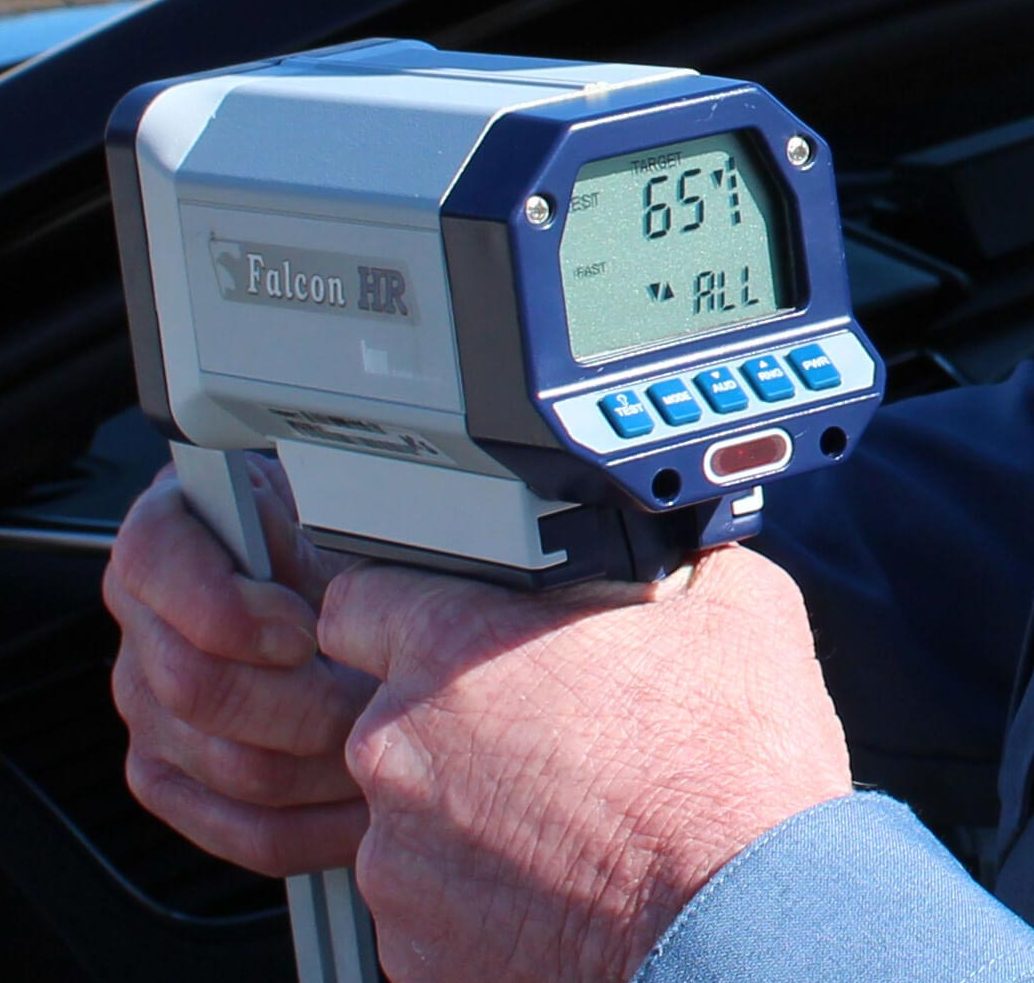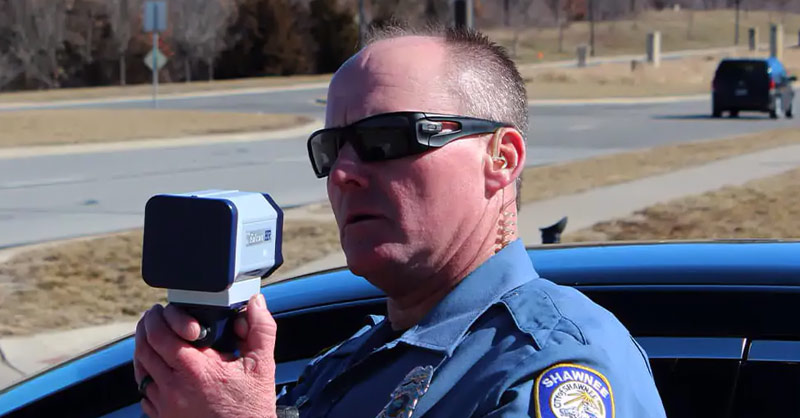RADAR (Radio Detection And Ranging) is the most common method of checking speed, with about 100,000 in use nationwide. It is the tool of choice by most traffic police officers, but how does it work?
A RADAR gun works by sending a signal to a passing vehicle, and the signal bounces back and returns to the device for analysis. The fact that the car is moving means that the return signal will have a different frequency from the original; this is called the Doppler Principle.
There are many types of units on the market, and some have the ability to operate in either a stationary position or while the cruiser is in motion. They can be handheld or mounted on the car’s dash and can either run on batteries or be powered by the cruiser.
Modes of Operation
A directional handheld unit can have several modes of operation, for example, the Falcon HR by Kustom Signal, a prevalent model amongst officers, can be used in five different ways:
- Stationary all: This mode is used while the vehicle is parked and can capture speed data from approaching or receding cars.
- Stationary approaching only: Only vehicles approaching will be captured by the gun. Receding motorists will be ignored.
- Stationary receding only: In this mode, the radar will analyze only vehicles receding from the parked unit. Approaching motorists will be ignored.
- Moving in the opposite direction: In this mode, your moving cruiser will measure motorists moving towards your cruiser.
- Moving in the same direction: This mode will allow measuring motorists traveling in the same direction as your cruiser.

Digital Signal Processing
Some RADAR systems have the ability to track multiple targets and display two target speeds at the same time using DSP (Digital Signal Processing). DSP allows the RADAR to measure and display the strongest target signal (typically the closest or largest in the beam) and the fastest target. This allows the operator to enforce the strongest or fastest target speed, regardless of the direction each motorist is traveling.
Important Handheld RADAR Tips
For the best use in stationary mode, place your unit (if you have the radar mounted) or place the radar itself (if you have it handheld) as parallel as possible to the road you want to track. Adjust the mode you would like to work in and the sound of the Doppler signal.
Remember that RADAR should be tested regularly to ensure that they are working as accurately as possible. Kustom Signals recommends testing the RADAR with tuning forks at the beginning and end of each shift. RADAR from Kustom, like the Falcon HR, will perform automatic internal accuracy tests every 5 minutes, with every mode change and every lock as well.
Kustom Signals is a leading provider of law enforcement speed enforcement and video solutions. Request a quote to get started.

